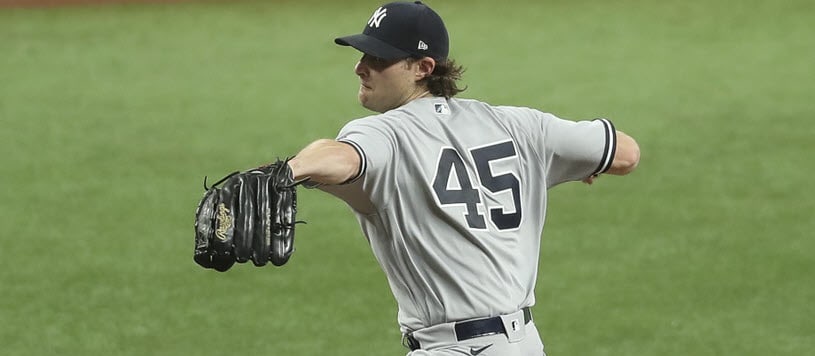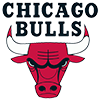Readers often ask about my own pitching staffs in the various fantasy leagues in which I compete. So, as we swing past the halfway point in the 2021 season, this could be a good time to see how I stand with pitching in my "Home" league. I will add that I typically focus very heavily on a few arms, so many of these guys pitch on several of my teams.
A little background:
This league has been in existence for a very long time. This is my 30th season, and most of the league's managers have been members for 20-plus years. It started in my hometown, but managers have gradually dispersed all over North America, and we usually all come back for draft day. However, with travel restrictions, etc., for the first time, we held the draft online. These guys are savvy, experienced and they are pretty familiar with the tendencies of the other managers. It's a challenging group, but that makes it fun!
With 15 teams, it is a mixed league keeper with deep rosters (33 players per team with no minor league or disabled list slots). Standard scoring categories, five hitting and five pitching, with a lineup consisting of 12 hitters and nine pitchers (with a minimum of five qualified starting pitchers and two qualified relief pitchers). One thing that makes roster management more challenging – picking up a free agent requires a "move," usually from a player being sent down or put on the injured list. You
Readers often ask about my own pitching staffs in the various fantasy leagues in which I compete. So, as we swing past the halfway point in the 2021 season, this could be a good time to see how I stand with pitching in my "Home" league. I will add that I typically focus very heavily on a few arms, so many of these guys pitch on several of my teams.
A little background:
This league has been in existence for a very long time. This is my 30th season, and most of the league's managers have been members for 20-plus years. It started in my hometown, but managers have gradually dispersed all over North America, and we usually all come back for draft day. However, with travel restrictions, etc., for the first time, we held the draft online. These guys are savvy, experienced and they are pretty familiar with the tendencies of the other managers. It's a challenging group, but that makes it fun!
With 15 teams, it is a mixed league keeper with deep rosters (33 players per team with no minor league or disabled list slots). Standard scoring categories, five hitting and five pitching, with a lineup consisting of 12 hitters and nine pitchers (with a minimum of five qualified starting pitchers and two qualified relief pitchers). One thing that makes roster management more challenging – picking up a free agent requires a "move," usually from a player being sent down or put on the injured list. You can then release that player and pick up someone on the waiver wire (order is determined by reverse order of the current standings). Since you probably won't want to cut a key player who goes on the IL for a short time, you really need versatility and some productivity on your bench.
So, let's review my pitching staff, and discuss my thoughts on who and why:
Overview: In all my years of playing fantasy baseball, this pitching staff, particularly the starting pitchers, might have the highest collective upside of any staff I have fielded. That's the good news. I should be giddy, right? Well, yes I was, but with considerable reservations. Unfortunately, although a couple guys have performed very well, injuries have severely limited, or in some cases, outright cancelled production for the 2021 season. I'm currently hovering in fifth place in the league with plenty of time to get into the race if only my pitchers can get and stay healthy. So, let's take a look at the staff:
- SP1 Gerrit Cole (8-4, 2.66 ERA, 0.90 WHIP) – I just acquired him (for a pretty steep price) as I desperately try to run down the teams in front of me in wins and strikeouts. There is some risk since he is a high-spin pitcher, but his 129 strikeouts in 101 innings makes that risk more palatable. He was battered last weekend in Boston, including allowing three homers as the wind blew briskly in Fenway Park. That is a bit scary, but I am betting (pretty heavily) on him adjusting and continuing to stand out as an elite starting pitcher.
- SP2 Shohei Ohtani (3-1, 3.60 ERA, 1.27 WHIP) – I have been writing most of my life. I have a huge vocabulary with hundreds of thousands of words, yet I am thinking of making up some new ones, because I have yet to find any to fully describe this guy's talent. His amazing 28 homeruns aside, he is an elite pitcher. He was pretty heavily restricted early on this season to protect his arm, but he is the true master of the high fastball and an off-the-table splitter, and opponents are being made painfully aware of that. I have a hard time believing any player can do what he is doing over a 162 game season, but he actually seems to be getting stronger and more dominating, albeit he can be a bit wild at times. I guess everyone needs some sort of weakness. After all, he is human, right?
- SP3 Carlos Rodon (6-3, 2.06 ERA, 0.90 WHIP) – I entered this year's drafts with Rodon high on my "must have" lists. In the reserve phase of my first draft, I weighed taking Rodon or another pitcher I liked with my upcoming pick. I liked Rodon better, but took Brad Keller thinking Rodon would last longer. I was wrong. Rodon went just before my next pick and I said then, "That might be the best pick of the draft." I didn't make the same mistake in any of my subsequent drafts, and Rodon has been a HUGE asset. When he's on, and he has been for the most part so far this season, his slider is nearly unhittable. He probably has to be considered an injury risk given his history, but outstanding stuff while pitching for a very good team is a tough combination to pass up. The White Sox are being a little cautious with his workload, but his usage suggests they are confident.
- SP4 Julio Urias (9-3, 3.95 ERA, 1.17 WHIP) – Urias is one of several on this staff who has occupied the penthouse suite of my elite kids list. He has worked through injuries that delayed his development, but he came into this season healthy and ready to go. He jumped off to a great start, winning seven of his first eight decisions before cooling off a bit in June. Even with a couple mediocre outings recently, his walk rate is way down with an increased strikeout rate. He rarely gives up hard contact, suggesting his higher than normal BABIP is at least partially due to some bad luck. The biggest concern is workload going forward. Given his injury history, he has already surpassed his highest innings pitched mark for a season (95 innings with a previous high of 80 in 2019), so the Dodgers could try to rein him in when possible. But, I consider this a breakout season.
- SP5 Jameson Taillon (3-4, 5.43 ERA, 0.90 WHIP) – Long a favorite (he was once at the top of my kid's list), Taillon is the definition of warrior. He includes two Tommy John surgeries and cancer surgery on his medical log, and he still tosses flashes of extreme upside. He has remade himself with very different mechanics to reduce stress on his elbow, so he is in somewhat of a learning curve. He works off of a fastball, generally successfully, up in the strike zone, but his command of his off-speed stuff has been spotty so far this season. It is coming, but he's not where he needs to be yet, making him especially vulnerable to longballs. Perhaps the most encouraging sign in recent weeks is his improving stamina. He was being strictly (and frustratingly) to around 70 to 75 pitches, but he has pitched deeper in his last couple outings.
- SP6 Danny Duffy (4-3, 2.44 ERA, 1.17 WHIP) – I watched parts of some of his early starts this season, and he really caught my eye. Duffy has been an on again, off again starter for most of his career, but this year was different. I would call him the new and improved Duffy. He changed his pitch mix, his velocity was up a bit, and most importantly, his arm slot was different, and the combination of these factors was allowing him to better command the strike zone, and creating more swings and misses. Unfortunately, not long after I added him, he went down with a forearm strain. He's back now, and there has been some rust, plus he's still working his way back to full strength, but I remain very optimistic.
- SP7 Dinelson Lamet (2-3, 3.67 ERA, 1.40 WHIP) – Just another on the long list of walking wounded, but this one is particularly worrisome. Lamet has been a prized member of my staff (in every league) since he arrived on the scene. He has one of the most devastating sliders in the game, and few can miss as many bats as he does when healthy. Ahhh. There's the magic words – "when healthy." He was shut down late last year with forearm (UCL) issues. He has, at least to date, avoided surgery, but a return to full strength, anticipated to be mid-May, has dragged into July, and he's actually back on the injured list with more forearm fatigue. He has pitched in 11 games – nine starts – but has only compiled 35 innings in 2021, far below my (hopeful) expectations, and his status going forward is cloudy at best. This one really hurts.
- SP8 Jake Odorizzi (2-3, 4.08 ERA, 0.96 WHIP) – When you are desperately seeking pitching help in a deep league, most of the options are far from appealing. Odorizzi might be an exception. He was awful in April (0-2, 10.13 ERA), but it was clear he wasn't right. He went on the injured list at the end of the month and was released by his manager. I watched him in his first couple outings upon his return and saw a lot of positive signs, so I picked him up. As you would expect, he is still rounding into form and building up his pitch count, but he has looked very good of late, allowing no runs over his last three outings, spanning 14 innings. If he continues to progress, he has decent strikeout potential, and with the Astros offense, I'm hoping for the run support to accumulate wins.
- SP9 Patrick Corbin (5-6, 5.33 ERA, 1.37 WHIP) – I wrote the following in my preseason assessment: Corbin is an excellent example of a starting pitcher who is pretty easy to read in any given start. His game is all about a quality fastball and a devastating slider. If he is spotting the fastball on the upper edges of the zone (not an easy take) and his slider is diving down and in to right-handed hitters, typically just off the ground near their back foot, pop a cold one, order a pizza and enjoy the game. If the fastball is easy to lay off, and the slider is arriving knee high or above, you might want to consider munching a handful of antacids, and changing the channel to the rerun of Field of Dreams. Need I say more? He's actually among my staff leaders in wins, but I have paid for them with a woeful ERA and WHIP. Inconsistency, thou art my burden.
- SP? Noah Syndergaard (0-0, 0.00 ERA, 0.00 WHIP) – Syndergaard was working his way back from Tommy John surgery, and while he wasn't expected to take the mound in New York until June, there was still time for a modest 2021 contribution. That all came to a halt in May when he experienced inflammation in that elbow. He is currently shut down and is unlikely to pitch before September, if then. It usually takes about a half season for a pitcher to get back to full strength and to get all the moving parts back in sync. Maybe he gets it all together sooner – some do – but it would be overly optimistic to count on that. This roster spot is now all about 2022 and beyond.
- RP1 Kenley Jansen (20 saves, 1.38 ERA, 0.95 WHIP) – As much as my rotation has struggled, my bullpen has excelled. I lead my league by 16 saves (53 to 37), and I haven't used all of my relievers as I continually stack my lineup with any healthy starters I might have. My long time top closer (in every league), Jansen has found the magic that sometimes wandered off the past couple seasons. He still relies on that wipeout cutter, but if it's not there on any given night, he will mix in a fastball with renewed velocity and/or a curveball. He is a true closer in every sense. Perfect? No. But about as reliable as they come.
- RP2 Mark Melancon (25 saves, 1.80 ERA, 1.09 WHIP) – As they do so often, many analysts relegate Melancon to a secondary bullpen role in the preseason, and as the dust settles, there he is in the ninth inning finishing games. That's not a problem for me. I got him for a song. He doesn't have the eye-popping fastball, or even a wipeout breaking ball, but what he does have is a closer's mentality, and a lot of experience getting hitters out in the endgame. This year, pitching for an exciting Padres team, all he has done is log a MLB-leading 25 saves, and, with him being 36, you have to wonder how long he can keep it up. Some pitchers were meant to finish baseball games, and I think he is one of them.
- RP3 Jordan Romano (6 saves, 1.21 ERA, 1.08 WHIP) – My hope going into the season was that I could get Jansen at a discount price and land someone like Melancon to anchor the pen with Romano and Emmanuel Clase rounding things out. It worked, at least so far. With the large lead in the saves category, Romano and the since-traded Clase (I love the guy, but I desperately needed starters) have been in and out of the active lineup as needed, primarily when I simply didn't have enough healthy starting pitchers to fill the lineup card.
- FLEX – this could be a SP6/7 or RP3/4 – Logan Webb, Mike Soroka, Emmanuel Clase, and MacKenzie Gore – This is generally my option slot. I fill it based on need and opportunity, and right now this end of the bench is pretty thin. Clase is gone via trade as I worked to bolster my starting pitching. Webb has pitched well when he has pitched, but shoulder problems have kept him from taking a regular turn, and Gore wasn't really being counted on to help in 2021, but even he has been struggling at Triple-A. The one big hit here has been Soroka. He is (or was) a front liner I had hoped to have back in May following 2020 surgery to repair a torn Achilles. He ended up having a second surgery "to address some issues" delaying that return. Then, walking to the clubhouse, he felt a pop and experienced another complete tear of his Achilles. Another surgery, out for the season. Something isn't right here. A torn Achilles is normally a fix it and return thing. There will be a decision to make this winter.
Some Notable Rotation Ramblings:
- I don't own any shares of the Dodgers' Walker Buehler, but I sure wish I did. He's another who is piling up successes with the magic formula of pitching up in the zone with fastballs, and then generating swinging strikes or soft contact with breaking pitches at the bottom, or even out of, the strike zone.
- Detroit's Matt Manning is continuing the 2021 trend of young pitching prospects struggling in their early days at the major league level. He was battered for nine runs in less than four innings last time out, but he has shown some positives in his brief trial. Adjusting to top level competition usually takes a while to happen.
- I have long maintained a mild interest in Colorado's Kyle Freeland. He was looking sharp in his most recent start (in Coors Field) before leaving with cramping. I have never owned him, as his home park detracts from his appeal, but he is the type of pitcher who could find more success in a different home.
- And, on the same day Gerrit Cole was shelled in Boston, Max Kranick pitched five perfect innings in his MLB starting debut for Pittsburgh. For perspective, that hasn't happened since 1893. So far, I am steadfastly resisting the urge to offer Cole in a trade for Kranick, straight up. Ummm, NOT.
Endgame Odyssey:
I'll start this with what will probably be the only time Seattle's Hector Santiago gets a mention in this column since his semi-useful years. He became the first pitcher to get kicked out of a game with the new foreign substance check rules. Atta boy, Hector. The Reds are back in the coin flip mode. With Lucas Sims and Tejay Antone out, the save chances have become more unpredictable. Amir Garrett says he can close, so here's his chance to prove it. I'm guessing he shares the ninth with Brad Brach. Similarly, Michael Fulmer is again on the injured list, and that probably makes the Tigers bullpen a timeshare – again. Gregory Soto (left) and Jose Cisnero (right) could again share the chances based on matchups. I watched Hunter Harvey again the other night. He needs to stay healthy and get everything in sync, but he has the stuff to someday be a very good closer for Baltimore. Amazingly, Arizona hasn't produced a save opportunity in nearly two months. With Stefan Crichton DFA'd and Kevin Ginkel banished to the minors, Joakim Soria looks like the last man standing in their pen. That said, I like to make rash predictions, so I am going to say J.B. Bukauskas (currently on a rehab assignment) could get one, or maybe even both, of their save chances the rest of the season.







































